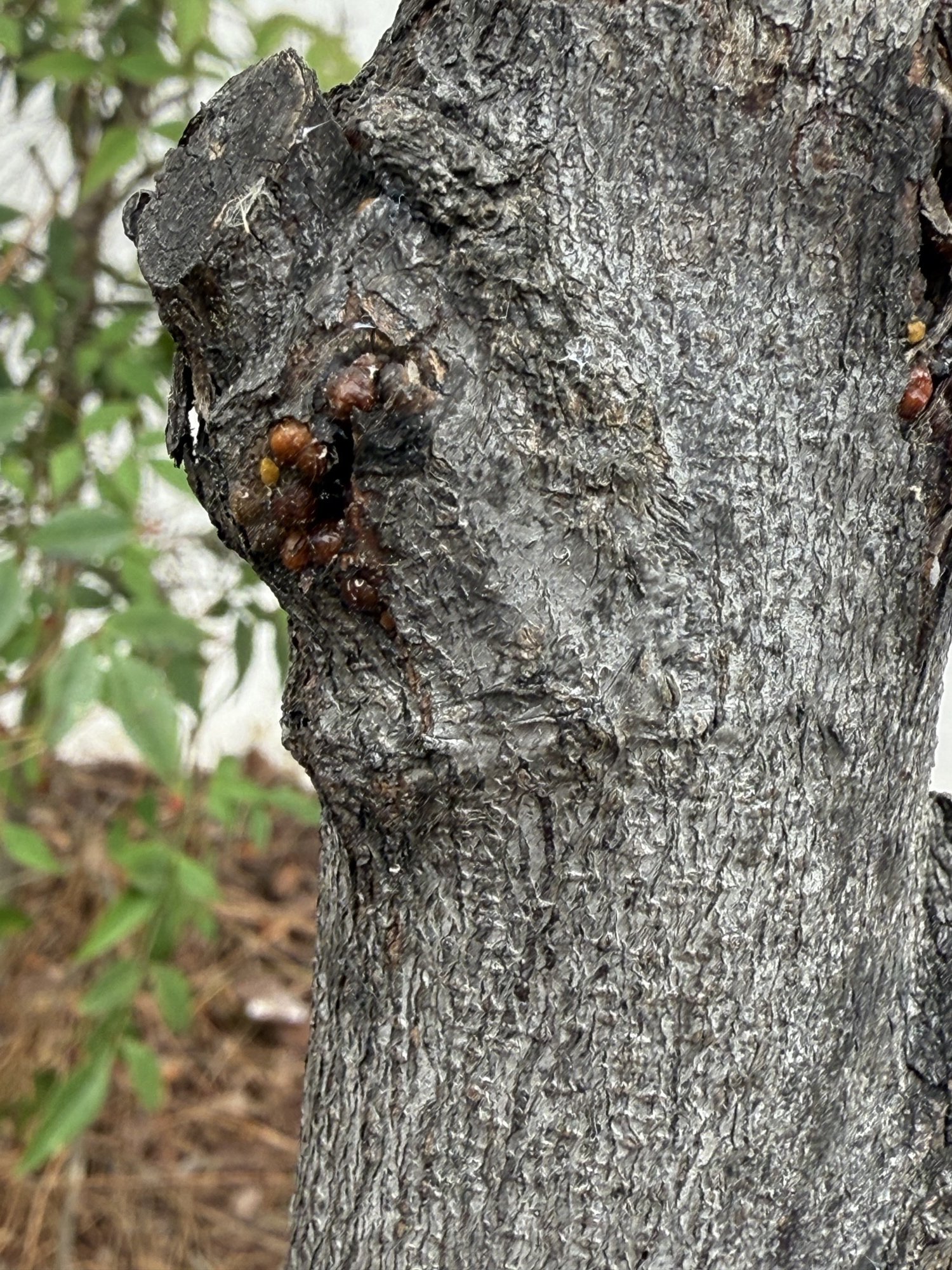Brown Scale on Trees: How to Identify, Manage, and Prevent Infestations
Spring in the Bay Area is a season of renewal, but it also signals the emergence of various tree pests, including Brown Scale (Parthenolecanium corni). These small, sap-feeding insects can affect many landscape trees, including maples, oaks, magnolias, redbuds, and citrus varieties, among others.
This article will help homeowners, property managers, and HOAs recognize Brown Scale infestations, manage outbreaks effectively, and—most importantly—prevent these pests by promoting overall tree health.
Identifying Brown Scale on Trees
Brown Scale insects appear as small, dome-shaped, brown or amber bumps, usually found clustered along twigs, branches, and occasionally leaves. Despite their appearance, these are not benign growths—they’re feeding insects that can weaken your trees.
Brown Scale infestation
Poor pruning and mechanical damage yield perfect targets for opportunistic pests such as Brown Scale.
Common Indicators of Brown Scale Include:
Sticky Honeydew Residue:
Brown Scale insects produce a sugary substance called honeydew, which attracts ants and encourages growth of sooty mold, a black fungus on leaf surfaces.Reduced Tree Vigor:
Affected trees may show sparse foliage, reduced growth rates, and diminished flowering or fruiting due to nutrient loss.Distorted Growth:
New leaves and branches might develop abnormally, often curling or stunting.
Healthy Trees: Your Best Defense
While scale insects are common, it’s important to know that healthy, well-maintained trees typically defend themselves without the need for chemical intervention. Robust, vigorous trees are naturally resistant to pests and diseases and rarely suffer significant damage from mild scale populations.
Therefore, the best strategy to combat Brown Scale is to maintain optimal tree health through proper care practices. Proactive, preventive tree management helps trees produce strong natural defenses, reducing reliance on treatments later.
Effective Strategies for Preventing Brown Scale:
1. Proper Watering:
Provide consistent, deep watering, particularly during dry months. Healthy, hydrated trees are naturally more resistant to scale and other pests.
2. Regular Mulching:
Organic mulch helps maintain consistent soil moisture, moderate soil temperature, and improve soil conditions, encouraging vigorous tree growth and reducing stress.
3. Prudent Fertilization:
Fertilize trees based on professional recommendations or soil tests, since improper fertilization can actually stress trees and attract pests.
Managing Brown Scale Infestations: Integrated Pest Management (IPM)
If Brown Scale populations exceed your tree's natural defenses, a balanced, environmentally conscious approach known as Integrated Pest Management (IPM) is recommended.
IPM Steps for Brown Scale:
Inspection & Early Detection:
Regularly inspect your trees for signs of scale and take action promptly before populations grow.Biological Control (Beneficial Insects):
Encourage beneficial insects like ladybugs and lacewings by avoiding broad-spectrum insecticides, as they naturally control scale populations.Horticultural Oil Application:
Dormant or horticultural oils can effectively control scale insects when applied appropriately, typically in late winter or early spring, suffocating pests without harming beneficial insects.Selective Chemical Treatments (as a last resort):
If infestations are severe, consult an ISA Certified Arborist or Registered Consulting Arborist (RCA) for precise recommendations, ensuring treatments are targeted and minimally disruptive.
Why "Less is More" in Pest Treatment
Avoiding unnecessary chemical treatments benefits your trees, your landscape, and the environment. Healthy trees with proper care rarely need aggressive chemical interventions. Over-treatment can inadvertently harm beneficial insects and create secondary pest outbreaks, destabilizing the natural balance.
When to Consult a Professional Arborist
If you're uncertain about your tree’s health or the severity of a Brown Scale infestation, consulting a professional is beneficial. At Align Tree Management, our certified arborists (ISA Board Certified Master Arborists and Registered Consulting Arborists) offer comprehensive evaluations, customized treatment plans, and practical advice for restoring your tree’s natural defenses.
Final Thoughts
Brown Scale is a common but manageable pest in the Bay Area. While mild infestations are often naturally controlled by healthy trees, it’s essential to monitor regularly, maintain proper tree care, and intervene strategically when necessary. Prevention is always more effective—and far less costly—than treatment.
Concerned about scale insects or other tree health issues?

